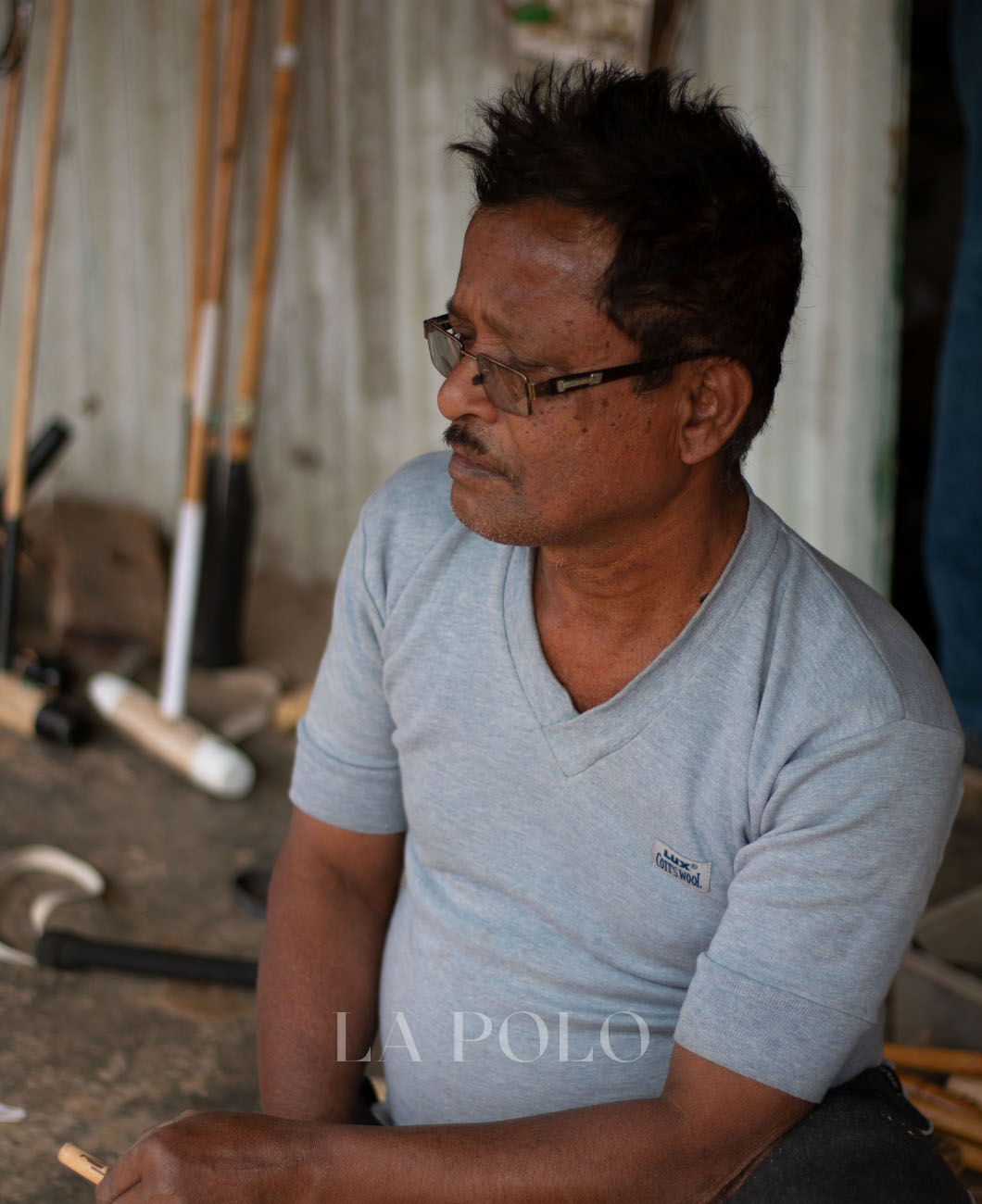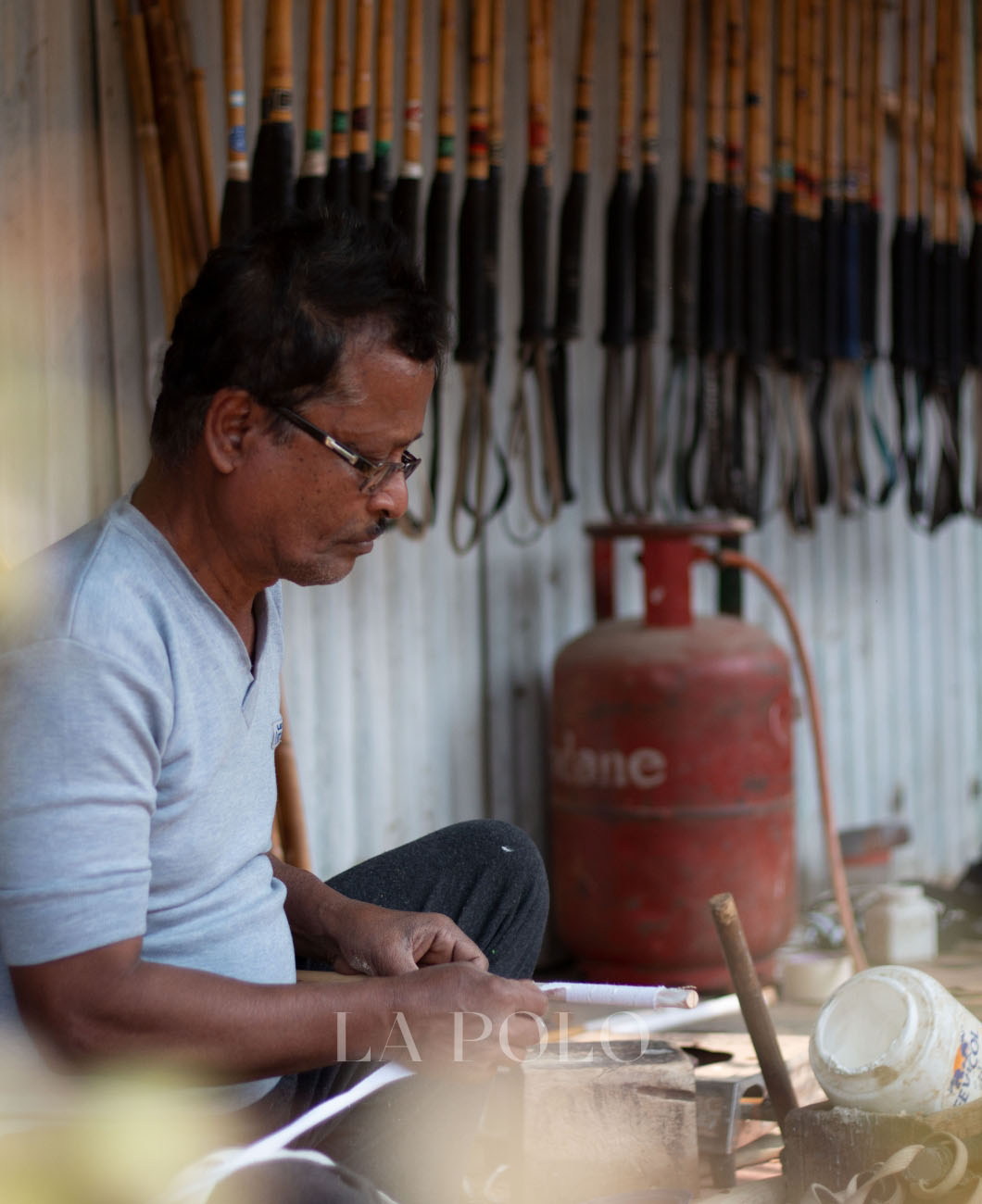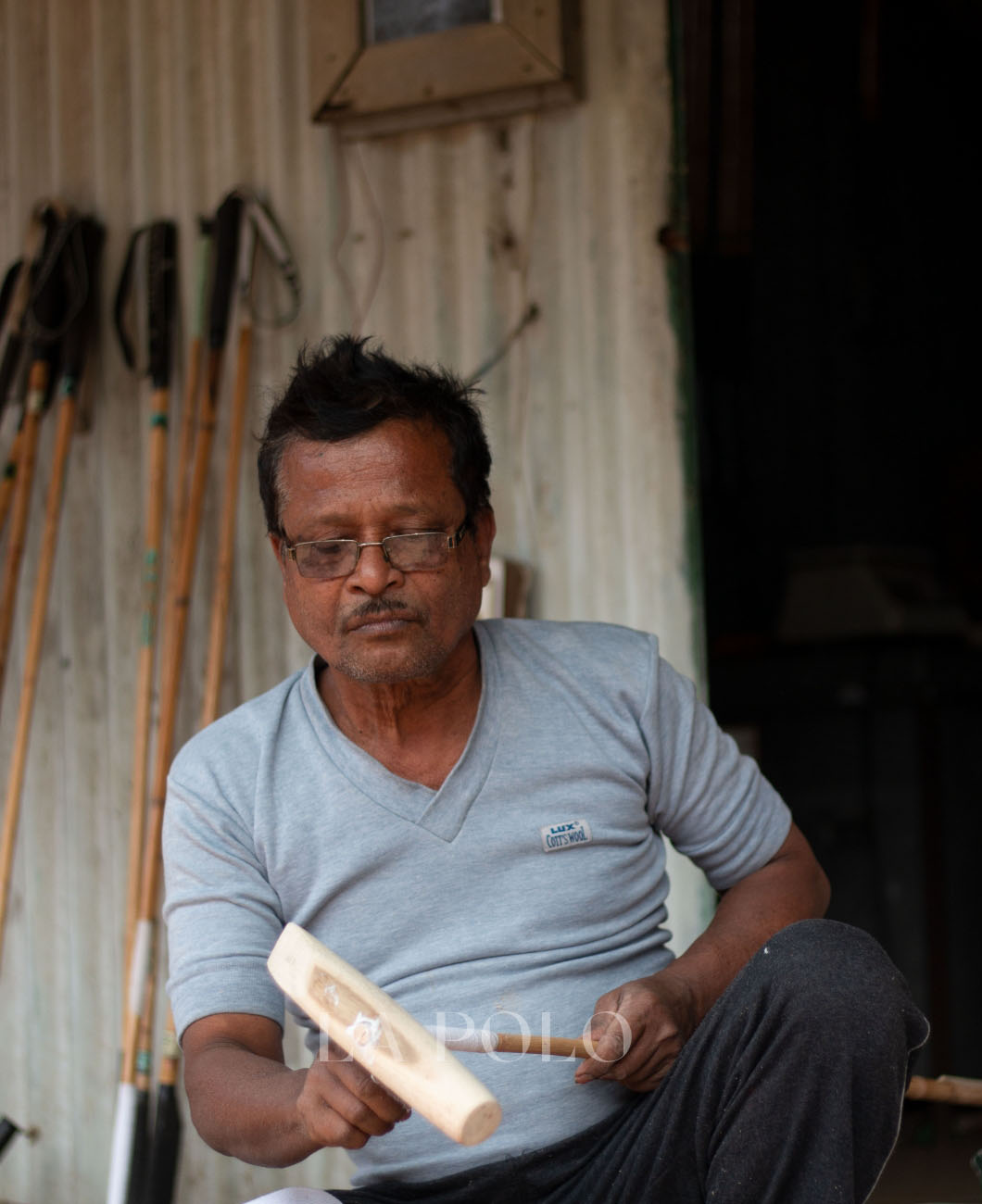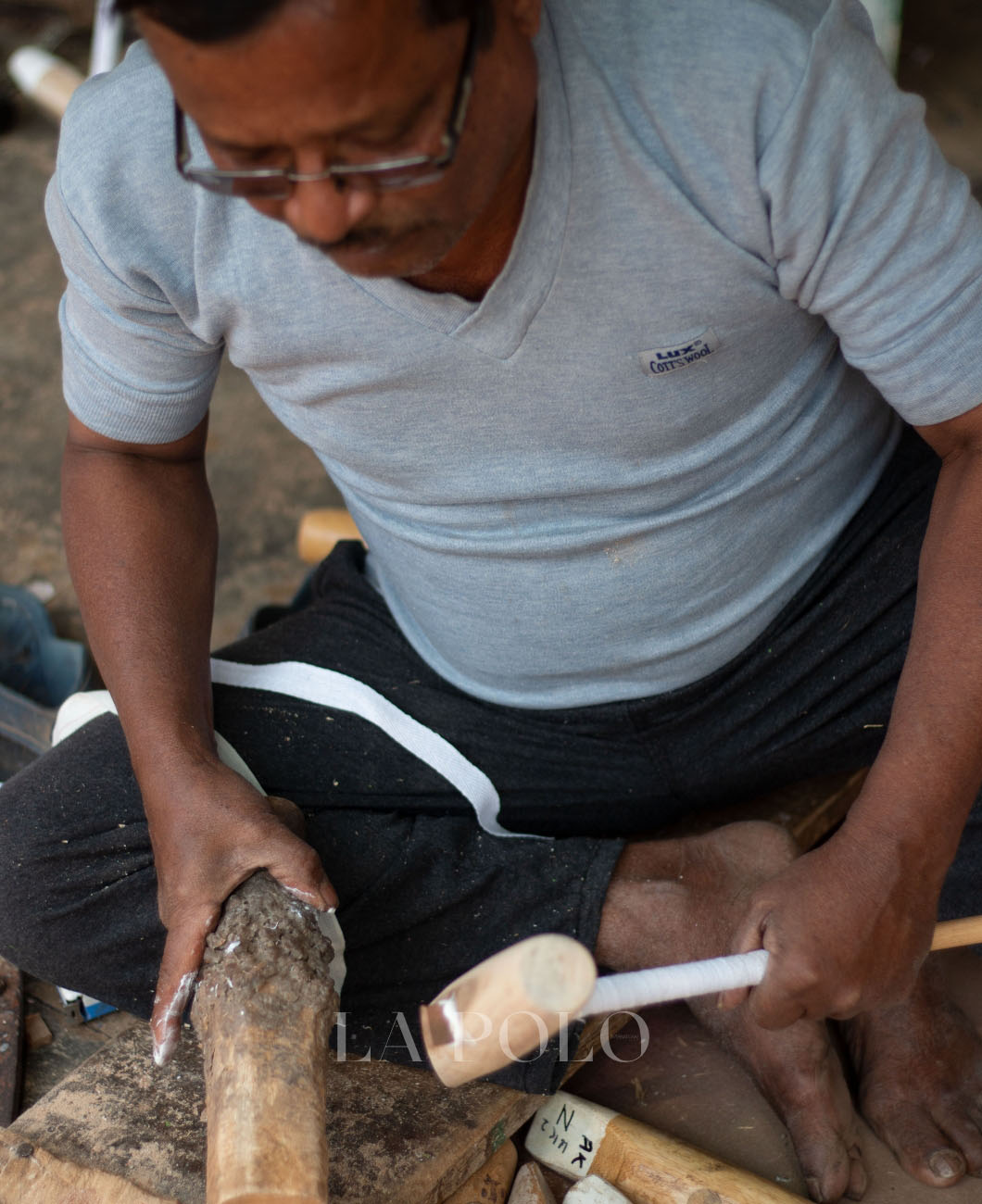Exclusive Legacy | The Polo Mallet
Subhash Chandra Baug talks about the move from bamboo to plastic balls

In 1860, when Polo was at its peak in India, the village of Deulpur, 20 km from Kolkata, was witnessing history in the making, by setting up an exclusive factory. Exactly 160 years now, LA POLO spoke to Subhash Chandra Baug, who is taking forward the legacy of his grandfather, with Baug Company. Sitting in a small camp, among horses, the man who runs Baug Company and is known as “Baug Dada”, says: “The factory is 20 km away from Kolkata, in Devalpur village, and that is where the polo equipment comes from. The workers are all there.”
For the major part of the year, Baug Dada works in Kolkata, but he visits Delhi every Delhi Polo Season (Oct-Dec/Feb-Mar). With his semi-finished products, he travels to the capital and the final fitting of the polo mallets then takes place in Delhi.

Baug's factory is the only one still making all goods for Polo. “We make everything in the factory, mallet, polo ball, etc.”
Subhas Chandra Baug is the only man alive who possesses the skill to shape a polo ball out of bamboo. “The bamboo ball is stopped from manufacturing because wooden is in demand. Bamboo balls were used on a large scale earlier because we had a lot of bamboo trees in the village. We used the roots to make the ball with our hands. The ball was in great demand but the quality kept falling. As there were a lot of orders, some companies in Kolkata took the order but started to use bad quality for making the ball. Slowly, the trend moved to plastic balls.”

When it comes to the question that what are polo mallets made of, Baug says that the plastic ball won't have a long haul in the sport. He points out the disadvantages. “Plastic balls have a lot of speed, which is difficult for the horse because he has to run faster. I feel we will come back to the wooden balls.”
The business started in 1860 by Baug’s grandfather, was taken over by his father and then by him. Currently, the business is best run by making the Polo mallet, commonly known as the Polo stick.

Baug says: “Polo stick, once ready, needs to be checked for balance; below 40 inches, the cane should be flexible.” Showing us what he meant, he started to move the end part of the stick to test the flexibility of the mallet.

Baug says that every player has a different balance; some prefer flexibility, and others go for rigidity. Also, you will have to maintain the weight of the head. “The weight of the head is around 180-250 gms. According to the height of the horse, the polo stick varies from 53-54 for higher horses. But 52 and 53 are much more in demand and for shorter horses 51. For Manipur horses, 45, 46, 47. In Ladakh, it is 42, 44. The weight of a polo stick is somewhere between 450-500 gm for a lighter mallet and heavier stick 500-550 gm.”
Baug’s favorite polo player is Samir Suhag. He adds: “Because we both are almost the same age. I have taught him some things about the Polo stick and I have also learned from him.”

